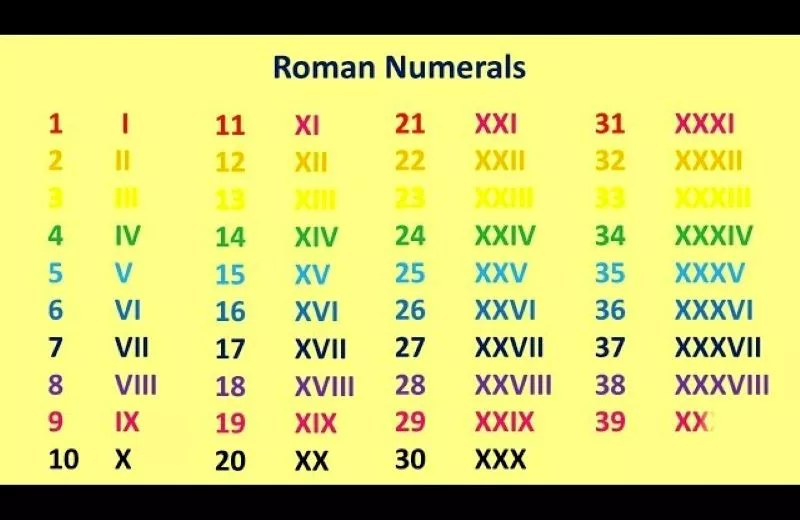
Have you ever wondered about the intriguing numerical system that existed long before our modern digits? Roman numerals are a captivating representation of numbers that have transcended time.
In this in-depth guide, we will embark on a journey through Roman numerals 1-100, unravelling their historical significance, deciphering their patterns, and exploring their various real-world applications.
A Glimpse into Roman Numerals
Originating from ancient Rome, Roman numerals utilise a collection of letters from the Latin alphabet to denote numerical values. Understanding the fundamental symbols is the key to unlocking the system:
- I: 1
- V: 5
- X: 10
- L: 50
- C: 100
Decoding Roman Numerals 1-10
Let’s start our exploration with Roman numerals from 1 to 10. Each number is constructed by combining the basic symbols in unique ways:
- I: 1
- II: 2
- III: 3
- IV: 4 (I subtracted from V)
- V: 5
- VI: 6 (V + I)
- VII: 7 (V + II)
- VIII: 8 (V + III)
- IX: 9 (X – I)
- X: 10
Unveiling Roman Numerals 11-100
Venturing further, we delve into Roman numerals spanning from 11 to 100. The pattern persists, making these numerals decipherable with ease:
- XI: 11 (X + I)
- XII: 12 (X + II)
…
- XX: 20 (X + X)
…
- XL: 40 (L – X)
- L: 50
…
- XC: 90 (C – X)
- C: 100
Roman Numerals in Modern Contexts
While the modern decimal system dominates, Roman numerals maintain a captivating presence. Clock faces, historic documents, architectural inscriptions, and even the names of monarchs and popes are adorned with these symbols. Movie titles, chapters, and numbered lists often embrace the classic charm of Roman numerals, lending an air of sophistication.
Using Roman Numerals
Roman numerals are often used in various contexts, including clock faces, book chapters, movie sequels, and more. Understanding how to write and interpret Roman numerals can be particularly useful when dealing with historical dates or numbering systems that still use them.
Unlocking the Charm of Roman Numerals
Roman numerals carry a timeless allure, intertwining history and symbolism. This guide has illuminated the intricate world of Roman numerals 1-100, equipping you to decipher their hidden meanings and appreciate their relevance in diverse domains.
Whether you encounter them in historical texts or contemporary design, you now possess the ability to unravel the enigma of these captivating symbols, enriching your understanding of numerical representation.
Utilising Roman Numerals
Roman numerals have enduring significance in various contexts. They are often found on clock faces, indicating hours and minutes, and are used in the names of monarchs and popes, denoting their sequence. Additionally, Roman numerals are seen in the titles of books, chapters, movie sequels, and copyright years.
Conclusion
The allure of Roman numerals lies in their historical value and distinct representation of numbers. This guide has provided you with an extensive grasp of Roman numerals 1-100, illuminating their structure and practical applications.
Whether you encounter them in historical texts, artworks, or modern design elements, understanding Roman numerals will empower you to unlock the significance of numbers encoded in this elegant and enduring system. (CW)



